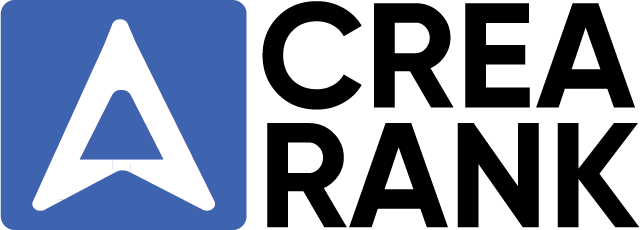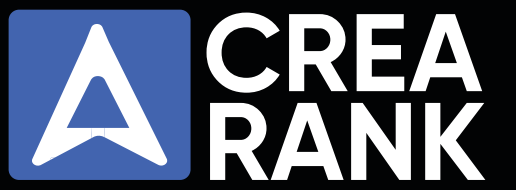Comprehensive Web Development Glossary for 2024
Whether you’re delving into website design or simply aiming to expand your knowledge of development terminology, you’ll likely come across numerous terms that may be new to you. We’ve compiled this extensive web development glossary packed with terms commonly used in the field to assist you!
404 Error:
An error message indicating the requested resource could not be found. Broken or dead links often trigger this message.
A
Accelerated Mobile Pages (AMP):
AMPs are simplified web pages with minimal HTML designed to enhance search results on mobile devices. Due to their streamlined nature, AMPs offer faster loading times and reduced data usage, improving mobile visibility.
Adaptive Design:
A method of building websites with multiple layouts tailored for different screen sizes.
Algorithm:
A set of instructions for performing specific tasks. When creating an algorithm, developers document all the steps necessary to solve problems and their respective functions.
API (Application Programming Interface):
A communication method between computers and applications.
Application (App):
Software enabling users to perform various tasks.
Attribute:
Information about elements of a component in website design/build.
B
B2B Web Development:
The process of designing and creating a website for a business-to-business company. Effective B2B web development enhances consumer understanding of the business and facilitates efficient browsing and product purchase.
Back-end:
The behind-the-scenes components powering front-end functionality. Critical elements of back-end development include the server, database, operating system, and software.
Bandwidth:
The maximum data transmission capacity between the Internet and a website within a specified timeframe. Higher bandwidth facilitates faster data movement, enhancing user experience.
Bootstrap:
Twitter developed a free, open-source front-end framework for designing websites and web apps to promote consistency across internal tools.
Browser:
Software used to access the Internet and display web pages. Browsers send requests for web content and assemble elements such as images, ads, and text to render webpages.
Bug:
An error or flaw preventing a website or app from functioning correctly.
C
Cache:
Storage of certain elements to expedite loading times for recurring website visitors. Users may need to clear their browser’s cache to view changes made to a website.
Classes:
Identifiers in CSS are used to specify styling targets. In programming languages, classes serve as blueprints for creating objects.
CMS (Content Management System):
Software for creating and managing website content. WordPress is a widely used CMS.
Code:
Instructions were written by web developers using programming languages.
Conversion:
Website objectives such as email signups and downloads.
Cookies:
Data sent by an Internet server to a browser, facilitating tracking of server accesses by the browser.
Crawl:
Process in which search engine bots visit websites to determine page existence and content relevance for search results.
CRM (Customer Relationship Management):
Software for gathering, analyzing, and maintaining customer information.
CSS (Cascading Style Sheet):
Code specifying webpage display instructions such as fonts and colors.
CTA (Call to Action):
Website buttons prompt specific conversions or actions.
D
Data Structures:
Organizing and storing data efficiently for easy access, retrieval, and manipulation. Examples include linked lists, stacks, queues, and sets.
Debugging:
Process of identifying and resolving bugs.
Deployment:
Launch of a website or app following development and testing.
DevOps (Development Operations):
A System that facilitates collaboration among development, IT operations, and quality assurance teams to improve end-product quality and cooperation.
Domain:
Website address entered into a browser.
Documentation:
A central repository of information for managing, maintaining, or using a website or software. Documentation may include requirements, architecture, technical details, user data, or marketing information.
E
Ecommerce Website Development:
Creating a website for selling or buying products or services online. This can enhance revenue generation and conversions for your business.
Enterprise Website Development:
Designing and developing a website for mid to large-scale (enterprise-level) businesses. This involves selecting the optimal structure for your site to deliver an exceptional user experience.
Cost Considerations for B2C Web Development:
Favicon:
Short for “favorite icon”; the icon displayed in a website’s browser tab.
Fields:
Fundamental components for data collection, serving as storage units for website visitors to input their names, email addresses, notes, etc.
Firewall:
A system designed to protect a secure network from an insecure network.
Framework:
A suite of programs utilized in website or software development to establish the groundwork for programming language usage in website or app development.
Front-end:
The visible portion of a website or app that users interact with.
FTP (File Transfer Protocol):
A method for exchanging files between computers.
Full-stack:
Developers are proficient in all three layers: front-end, back-end, and database.
G
GUI (Graphical User Interface):
The visual layout and interactive components of a website.
H
HTML (Hypertext Markup Language):
A language specifying how a document should be displayed as a webpage, comprising tags, elements, and attributes.
HTTP (Hypertext Transfer Protocol):
A protocol for transferring data over the Internet between HTTP server and client programs.
HTTPS:
An enhanced version of HTTP protocol providing secure data transfer by encrypting information such as names, addresses, and credit card numbers.
I
Information Architecture:
The organization of complex information clearly and logically, facilitating user-friendly navigation through websites and apps.
J
Java:
A widely-used programming language known for its platform independence and compatibility with various operating systems.
JavaScript:
Primarily employed as a client-side language, integrated into HTML pages and sent to a browser to enhance automation, animation, and interactivity.
jQuery:
A JavaScript library simplifies JavaScript usage on websites by condensing multiple lines of code into a single line.
M
Meta Tag:
Additional information associated with web pages or elements, influencing aspects such as content display in search results, image credits, or primary keywords.
Minification:
Reducing code and markup to decrease file size.
Mobile-first:
A design and development approach prioritizing mobile devices, with websites initially built for small screens before desktop optimization.
MVP (Minimum Viable Product):
The most basic version of a product is released to the market. It focuses on core features and functions essential for initial release, with further enhancements based on user feedback.
MySQL:
A popular open-source database management system.
O
OOTB (Out of the Box):
Pre-configured options for features and functions available for download and installation without requiring customization.
Opening/Closing Tags:
Angle brackets (< >) enclosing HTML elements to structure web page content. Closing tags feature a forward slash (</>).
Operating System:
Software enabling application execution on devices.
P
Page Template:
The layout blueprint for a webpage, shared among pages with similar structures.
PHP (Hypertext Preprocessor):
A server-side scripting language generates dynamic page content, manages user access, and encrypts data.
Plugin:
An extension adding supplementary functionality to existing software.
Property:
Characteristics controlled by CSS, such as color schemes and fonts.
R
Redirects:
Automatic forwarding from one URL to another, typically from an old website URL to the corresponding page on a new website.
Registrar:
A company offering domain registration services.
Resolution:
The size at which images or graphics can be rendered on a display.
Responsive Design:
Websites adapt to the screen size of the device on which they are viewed.
S
SAAS Platforms:
“Software as a Service” cloud platforms facilitate file sharing and project collaboration through web browsers.
Server:
Computers running software enabling user access to websites and hosting services.
Sitemap:
An organized outline of all website pages arranged hierarchically.
Slider:
A rotating carousel of images often featured on a website’s homepage, highlighting various photos, links, and content.
Software Stack:
A combination of software components working together to form the back-end infrastructure of a website.
SSL (Secure Sockets Layer):
A security protocol ensuring encrypted data transmission between web servers and browsers.
T
Text Editor:
Software used for writing plain, unformatted text.
U
UI (User Interface):
Visual elements comprising a website or app.
UX (User Experience):
The overall user interaction focuses on the satisfaction and effectiveness of the experience.
W
Web App:
Applications are accessed through web browsers and are adaptable to various devices.
Widgets:
Applications enabling specific interactive functions on a website.
Wireframe:
The skeletal structure outlining a website’s layout.
WYSIWYG (What You See Is What You Get):
A visual content editor within CMS allows content modification without requiring HTML knowledge.

